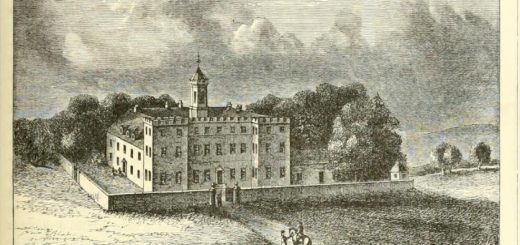St Magnus the Martyr Church
St Magnus the Martyr was the second church to be damaged during the Great Fire of London in 1666 and was subsequently rebuilt by Sir Christopher Wren (born 20 October 1632 – died 25 February 1723) at a cost of £9,580. The church, which is a Grade I listed building, drew the attention of those interested in hauntings during the first half of the twentieth century following several witness reports of an apparition, possibly that of a monk.
The stone church which was destroyed during 1666 dated from 1234 and replaced one at the foot of London Bridge which was mentioned in a Grant by King William I in 1067 (Westminster Charter). As it was conveniently close to the River Thames, between the 15th and 17th centuries the church of St Magnus the Martyr was the chosen site for the Bishop to call all the clergy in his diocese together for general meetings.
 In 1563/4, following the Reformation of the Monasteries, the break from Rome and the creation of the Church of England, Edmund Grindall (born circa 1519 – died 6 July 1583), the Bishop of London appointed the former Bishop of Exeter Miles Coverdale (born circa 1488 – died 20 January 1569) as rector of the parish and the churchwardens were then instructed to break all the altar stones in the church. Coverdale was rector at St Magnus the Martyr until 1566.
In 1563/4, following the Reformation of the Monasteries, the break from Rome and the creation of the Church of England, Edmund Grindall (born circa 1519 – died 6 July 1583), the Bishop of London appointed the former Bishop of Exeter Miles Coverdale (born circa 1488 – died 20 January 1569) as rector of the parish and the churchwardens were then instructed to break all the altar stones in the church. Coverdale was rector at St Magnus the Martyr until 1566.
On 18th April 1760 a fire in a nearby shop spread to the church damaging the vestry, organ and roof. In 1762 the vestry was moved and arches in the tower opened to accommodate the footpath over London Bridge, which had been moved when the bridge was widened. Renovations were made to the interior by Martin Travers between 1924 and 1925.
Miles (or Myles) Coverdale
Miles Coverdale was a Bible translator and is responsible for producing the first English language printed Bible, the Coverdale Bible in 1535. Following the reformation King Henry VIII had a copy of the Coverdale Bible available in every church. It is thought that Miles may have been born in or close to Coverdale in North Yorkshire and was educated in Cambridge. He was Kings Chaplain for King Edward VI (born 12 October 1537 – died 6 July 1553) and almoner for Catherine Parr (born 1512 – died 5 September 1548), King Henry VIII’s widow. Made Bishop of Exeter in 1551 but was forced to flee to Denmark when the catholic Queen Mary I (born 18 February 1516 – died17 November 1558) came to the throne following her brothers death. Returning to England in 1559 he was made rector of St Magnus the Martyr in 1563/4. Originally buried in St. Bartholomew’s by the Exchange, his remains were moved to the south east corner of St Magnus the Martyr following St Batholomew’s demolition in 1840.
Haunting
 The key well known witness accounts for experiences in the church of St Magnus the Martyr date from before World War II and according to John and Anne Spencer in The Encyclopedia of Ghosts and Spirits they were related to the investigator Philip Paul by the rector, Rev. H J Fynes-Clinton.
The key well known witness accounts for experiences in the church of St Magnus the Martyr date from before World War II and according to John and Anne Spencer in The Encyclopedia of Ghosts and Spirits they were related to the investigator Philip Paul by the rector, Rev. H J Fynes-Clinton.
Mrs Gallagher who was the wife of a former rector saw a silent hooded figure kneeling under a picture of Jesus Christ by the tabernacle within the church. The sighting lasted a few seconds before the figure disappeared and as she saw from the figure from the side she did not see the apparitions face under the hood.
A second sighting was made in the vestry by Miss Few, who unaware of Mrs Gallagher’s experience, reported seeing a figure in a cassock stood near her. She was sat doing embroidery and looked up at the figure who was facing her. Looking inside the cowled hood she was horrified to notice that it was empty and covered no face or head. Fleeing the room she reported the experience to Rev. Fynes-Clinton. Upon investigation of the vestry the figure was no longer present.
A third sighting of the monk like figure was made by the verger, who, unaware of the experiences of Mrs Gallagher and Miss Few saw an apparition looking down at the tomb of Miles Coverdale.
According to the Paranormal Database the apparition has been described as having black hair and state that visitors report a great feeling of sadness when near the tomb of Miles Coverdale.



Recent Comments